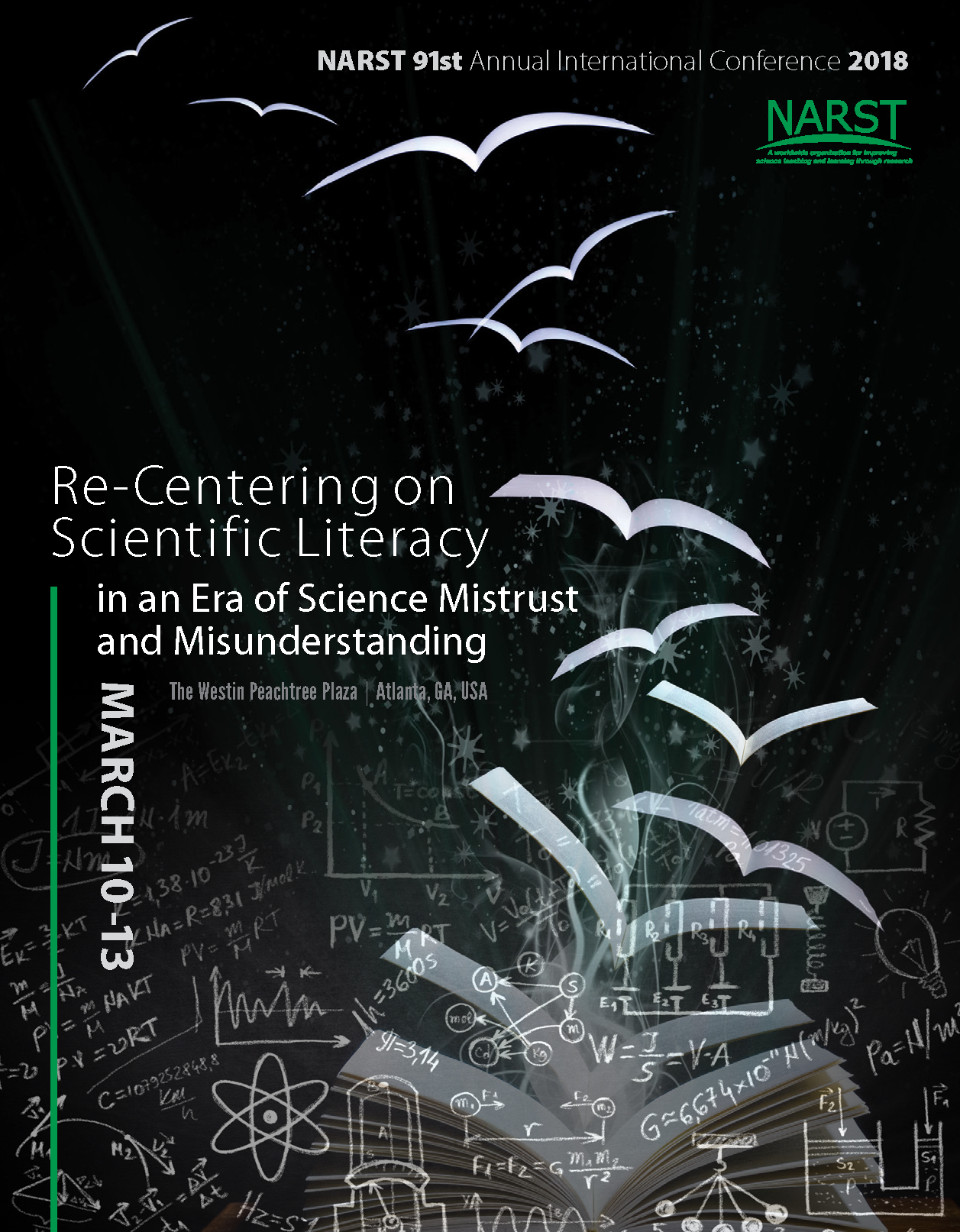
Recently, two TIDESS project members (Principal Investigator Katie Stofer and I) had the opportunity to attend and co-present our work at the NARST Annual International Conference in Atlanta, Georgia. In general, conferences provide a great opportunity to share what you’re working on and to get valuable feedback, to network with colleagues and identify opportunity for future collaborations, and to learn about associated work.
NARST describes themselves as “A Worldwide Organization for Improving Science Teaching and Learning Through Research”. This particular conference brings together educators and researchers who work on science learning from many different angles. The conference content is arranged by different “strands” and had 15 of these, including: History, Philosophy, and Sociology of Science; College Science Teaching and Learning; Cultural, Social, and Gender Issues; and many others. Our presentation was within Strand 6: Science Learning Within Informal Contexts. “Informal Learning” is a phrase researchers and facilitators often use to describe education and learning experiences that take place outside of formal structured contexts like classrooms. Other terminology, such as “free-choice learning”, can also be used to describe the process (you can read Katie’s paper detailing some of the nuances of this terminology here). Our work fits within this topic due to our focus on science museums.
For this particular presentation, we focused on the science content and science practices we saw discussed by participants within the TIDESS tabletop Before giving this presentation, we developed and submitted a five-page abstract that summarized some of the key ideas we would be presenting. This abstract was then peer-reviewed before we were accepted into the conference. I reference the process briefly in my post here. Both the process of developing the extended abstract and putting together the presentation has put us well on our way to writing up our results for future publication in an education journal. Another one of our current team members, Hannah, describes some of her experience with expanding the results into a more formal paper in her recent post.
We also were able to catch multiple exciting presentations in our own strand and others, such as Environmental Education and Educational Technology, incorporating ideas that might be of interest within the TIDESS project. For example, several other presenters were also exploring the concept of embodiment within their own research. It was helpful to identify people within our specific research community working on the topic and to see how they are navigating the role of embodied cognition in a variety of different contexts.
Keep an eye on the blog as we will have upcoming posts detailing how our research is progressing and will undoubtedly have more news about developments from the human-computer interaction part of our team!
by Carrie Schuman
 0
0

Comments are closed.